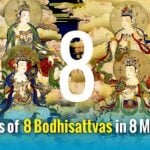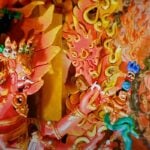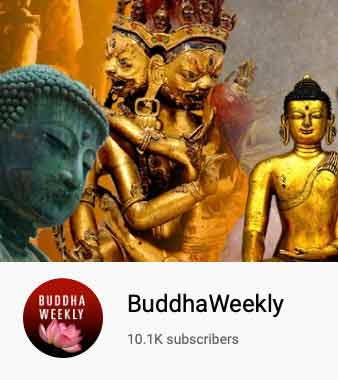Search Results: zasep tulku
Mantra Part 2: Good Vibrations — Mantras in Buddhist Practice “Of what is the body made? Of emptiness and rhythm.” How does mantra work?
"Of what is the body made?" asked George Leonard in The Silent Pulse. "It is made of emptiness and rhythm." He went on to describe how science views matter: "We can see the fully crystalline structures of muscle fiber, waving like wheat in the wind, pulsing many trillions of times a second....
The Science of Mantras: Mantras Work With or Without Faith; Research Supports the Effectiveness of Sanskrit Mantra for Healing — and Even Environmental Transformation
"At the heart of each of us, whatever our imperfections, there exists a silent pulse of perfect rhythm, made up of wave forms and resonances, which is absolutely individual and unique, and yet which connects us to everything in the universe." — George Leonard, Silent Pulse [13] Mantra is thought of as...
The Sound of Enlightenment: Healing, Setting the Mind Free, Protecting the Mind, and Remaining Mindful of Dharma Throughout the Day
In some Buddhist cultures, children learn to chant mantras before they learn more common speech. Mantra, sacred sounds, are often considered protective and healing, or even life-changing. They are commonly used by Buddhists and Hindus, and — arguably — other religions who make use of "chanting." It seems almost silly to accept the...
Fearless Buddhist: How to overcome fear in uncertain times, according to Pali Sutta, Mahayana Sutra and Tantra and King Gesar
The Sacred Symbol of the Horse in Buddhism; Special Significance in Tibet and Mongolia
Alternatives to “Seated” Meditation: Dance, Stand, Drum, Chant, and Move Your Way to Active Enlightenment — Taking a Stand: Activity Yogas
Guru Rinpoche’s advice for visualizing the deity: a how-to from Padmasambhava with advice from today’s teachers (with video how-to)
Emptiness and Shunyata: What the Teachers Say About Emptiness: Removing “Lazy Nihilism” and “How Deep the Rabbit Hole goes”
What do big moons, lazy nihilists and rabbit holes have to do with Shunyata? Yesterday I read a feature on Space.com which became the inspiration of this feature: "The 'Big Moon' Illusion May All Be in Your Head," by Joe Rao. This led to rabbit holes and lazy nihilism. Bear with me, I come back...
Prostration, Praise and Prayers — the most essential practices for busy Buddhists. “Go Bananas” for Buddha: Devotion
"Go bananas for the Buddha, "is sage advice for any practitioner, new and advanced students alike. The great teacher Dzongsar Khyentse Rinpoche once described devotion in a talk on Tara: “The devotees of Tara, especially the devotees from great universities like as Nalanda, they go bananas. They long for her, they praise...















